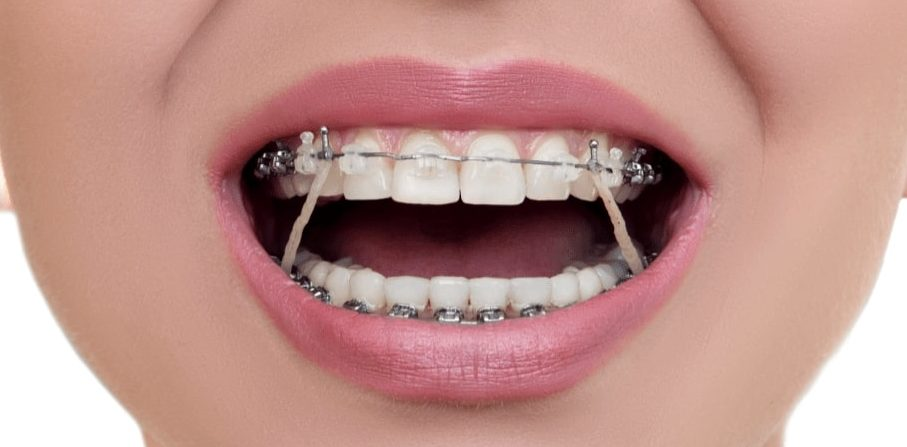For those on the journey to a perfect smile, you might already be familiar with the small rubber bands attached to braces. These aren’t just decorative; they’re known as intermaxillary elastics and play a crucial role in orthodontic treatment. They’re more than simple accessories; these tiny elastic bands are essential for aligning teeth, correcting bite issues, and guiding the jaw into optimal positioning. Let’s dive into why these elastics are so critical, how they work, and why wearing them consistently is essential to achieve the best results.
Why Use Intermaxillary Elastic Bands in Braces?

Intermaxillary elastics, or orthodontic elastic bands, are a fundamental component of orthodontic treatment. While brackets and wires in braces provide the foundation for tooth movement, elastic bands add an extra level of force that’s essential for complex adjustments. They’re strategically placed between brackets on the upper and lower teeth, allowing them to influence the alignment of the teeth and the relationship between the jaws.
The purpose of these bands extends beyond just straightening individual teeth. They’re designed to improve the overall positioning between the upper and lower jaws, making the bite both functional and aesthetically pleasing. Simply put, intermaxillary elastics are a key player in the efficiency and effectiveness of orthodontic treatment, ensuring that all parts of the mouth work in harmony.
Accelerating Teeth Movement with Orthodontic Elastic Bands
The benefits of orthodontic elastics aren’t just cosmetic—they’re also functional. When you wear these bands consistently, they apply a constant, gentle force that encourages the teeth and jaws to align more quickly. Patients who follow their orthodontist’s instructions and wear elastics as recommended often experience faster results.
These elastics promote synchronized movement of the upper and lower teeth, helping them align in a way that standard brackets and wires alone cannot achieve. By applying the correct tension, elastics reduce overall treatment time, bringing you closer to the smile you’re aiming for.
How Elastic Bands Improve Bite Alignment
One of the main goals of intermaxillary elastics is to correct bite alignment. If you’re dealing with an overbite, underbite, or crossbite, elastics provide the targeted force necessary to reposition the jaw and teeth. Each type of bite issue requires a unique configuration of elastic placement. For example, in cases of an overbite, an elastic may connect from a front bracket on the upper teeth to a back bracket on the lower teeth, gradually pulling the upper teeth back and the lower teeth forward.
This steady force gently guides the jaw into a more balanced and functional position, improving not only the look of your smile but also its functionality. A well-aligned bite isn’t just about aesthetics—it enhances chewing, speaking, and reduces unnecessary wear on the teeth.
Correcting Crooked or Misaligned Teeth with Elastic Bands

In cases where teeth are crooked or misaligned, elastics provide the extra force necessary to reposition them on the correct dental arch. Orthodontic elastics, when combined with braces, work effectively to bring each tooth into its proper place. By attaching to specific brackets, these bands help to guide the misaligned teeth into a more natural and aesthetically pleasing position.
These bands also make it easier to adjust individual teeth, helping each one fit smoothly into the overall dental structure. When used correctly, elastics significantly contribute to achieving that perfectly aligned smile you’ve been working toward.
Customized Force for Each Orthodontic Case

Each orthodontic case is unique, and orthodontic elastics can be adjusted to meet individual needs. Orthodontists choose the size, type, and strength of elastics based on each patient’s specific requirements, creating a personalized approach to dental alignment. By selecting elastics with the appropriate tension, orthodontists ensure that each patient’s teeth move gently yet effectively into the ideal position.
As treatment progresses, adjustments may be made to the type and placement of elastics to maintain optimal force. This customized approach guarantees that each patient receives the precise correction needed, leading to better and faster results.
How to Wear Intermaxillary Elastic Bands Properly
Consistency is the key to success with orthodontic elastics. Wearing them daily as prescribed ensures a steady and controlled force that gradually aligns the teeth and jaws. Patients who follow their orthodontist’s instructions typically achieve faster and more satisfying results.
It’s important to keep the elastics in place as instructed. If you remove them frequently or fail to wear them consistently, it can slow down the treatment process. Constant pressure is needed to move teeth into the desired positions, so maintaining this pressure by wearing your elastics regularly is essential to staying on track with your treatment plan.
The Case of Overbites and Buck Teeth

When it comes to specific cases like overbites (commonly referred to as “buck teeth”), elastics are particularly useful. Orthodontists place these elastics strategically, often attaching them from the front bracket of the upper jaw to the back bracket of the lower jaw. This placement allows the elastic to apply backward pressure on the upper teeth while pulling the lower teeth forward, gradually correcting the overbite.
Using elastics for overbite correction is one of the most effective methods for managing significant bite issues, helping to create a balanced and functional alignment between the upper and lower teeth.
What Are Orthodontic Elastics Made Of?
Orthodontic elastics are crafted from high-quality medical-grade rubber, chosen for its durability, safety, and comfort. This specialized rubber is designed to withstand the pressure required to move teeth over time without causing irritation or discomfort.
The rubber’s flexibility makes it ideal for stretching between brackets, ensuring that it remains intact without breaking, even when under constant tension. Because of its medical-grade quality, patients can confidently wear these elastics for extended periods without worry, knowing that it’s safe for long-term use inside the mouth.
Making Lifestyle Adjustments During Orthodontic Treatment
Achieving the best results from orthodontic treatment often requires making minor lifestyle adjustments. Following your orthodontist’s instructions on diet, hygiene, and elastic wear can have a big impact on the outcome. Avoiding sticky or hard foods, keeping up with regular brushing and flossing, and committing to wearing elastics consistently all contribute to the success of your treatment.
By being mindful of these adjustments, you’re actively working toward a healthier, better-aligned smile.
Conclusion: The Power of Intermaxillary Elastic Bands in Orthodontics
Intermaxillary elastics are a vital part of orthodontic treatment. They may be small, but they play a big role in aligning teeth, correcting bite issues, and achieving a healthy and balanced smile. When used correctly, these bands significantly contribute to the success of the orthodontic journey, making complex adjustments possible.
By following your orthodontist’s instructions and wearing elastics consistently, you’re ensuring that you’ll get the best possible results from your treatment. So, while these tiny bands might seem like just another part of your braces, they hold the power to transform your smile. Embrace them as a valuable tool on your orthodontic journey, and you’ll be well on your way to the smile of your dreams.


